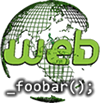Build CentOS 8 vagrant box from scratch in Windows
We need to install VirtualBox and Vagrant in Windows and download the DVD ISO image of CentOS 8 to be able to build CentOS 8 vagrant box. It is recomended to use Chocolatey (a software management automation for Windows) to install these software. To install Chocolatey, follow the procedure here.
Steps:
-
Install VirtualBox by executing the following command from the command line or from PowerShell:
